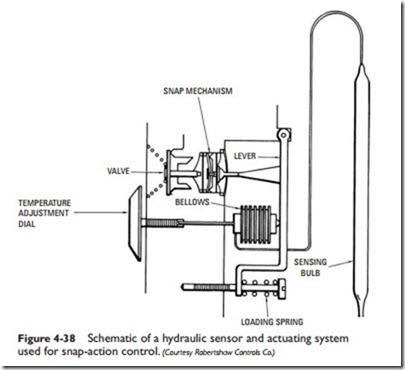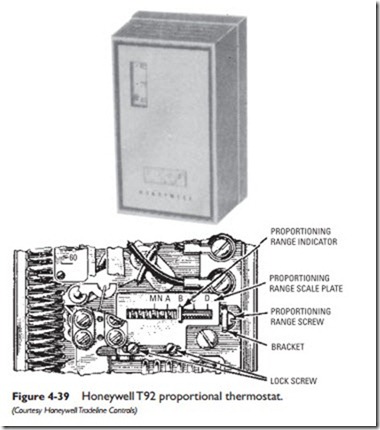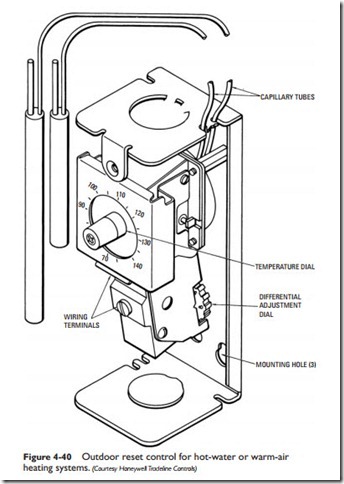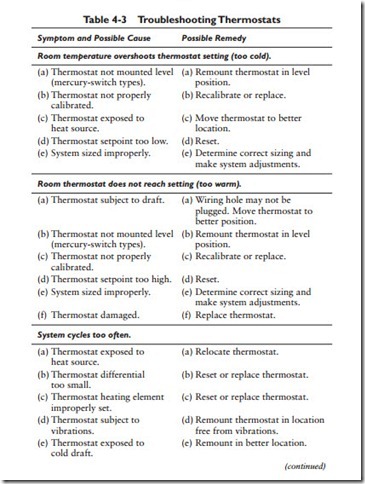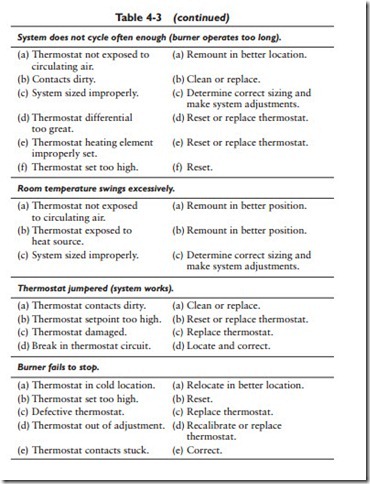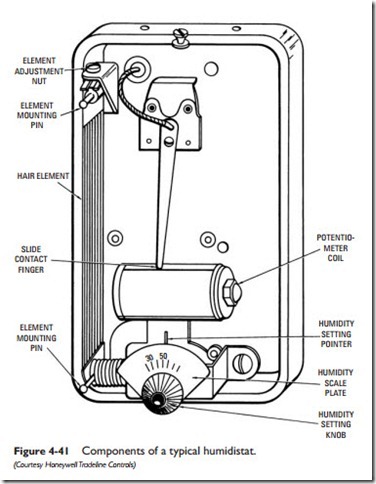Troubleshooting Thermostats
Thermostat problems are sometimes the result of poor wiring connections. Check the wiring first. You should also make certain that the fan and system switches and the temperature setpoint are properly set.
The troubleshooting chart in Table 4-3 includes many of the more common symptoms and possible causes of operating problems associated with thermostats.
Humidistats
A humidistat is a switching device used to control the level of humidity in a confined space. Standard applications include the basic on-off humidity control of a heating/cooling system or the high-limit safety interlock of a humidifier.
The earliest humidistats used a hygroscopic material in the construction of the sensing or control element (see Figure 4-41). Hygroscopic materials, such as animal hair or certain types of plastics, are those affected by the moisture content of the air. When the material absorbs moisture from the air, it expands. When the surrounding air becomes drier, the hygroscopic material gives up moisture to the air and contracts. This expansion and contraction of the control element in the humidistat opens or closes the electrical cir- cuit controlling the humidifier. These early humidistats, many of which are still in use today, are commonly called electric humidis- tats, mechanical humidistats, electromechanical humidistats, humidity controllers, or hygrostats—a lot of different names, but all operating on the same principle of using a hygroscopic material to mechanically switch an electrical current on and off.
Electronic humidistats are being used in most new heating/ cooling systems today instead of the older electromechanical types.
They are also being used to replace the older units in existing systems. An electronic humidistat uses electronic switching circuitry to create the switching action. In some electronic humidistats, a thin film capacitance is used to sense the moisture content of the sur- rounding air. Others use various polymer-resistance analog humidity- sensing technologies.
Pneumatic humidistats are also designed to sense changes in ambient relative humidity (see Figures 4-42 and 4-43). As shown in Figure 4-43, the sensing device is a nylon element near the set- point adjustment wheel at the bottom of the humidistat. When the nylon sensing element responds to changes in the ambient relative
humidity, it produces a proportional change in the branch line pressure and changes the control actuator position by the same proportion.
